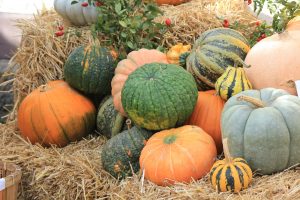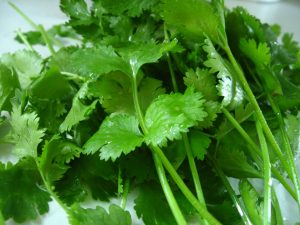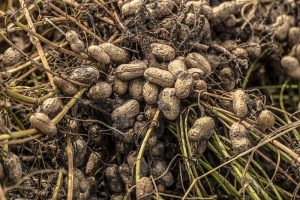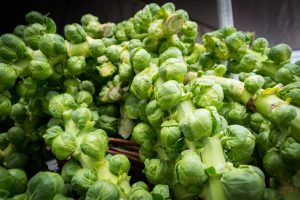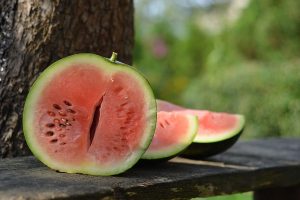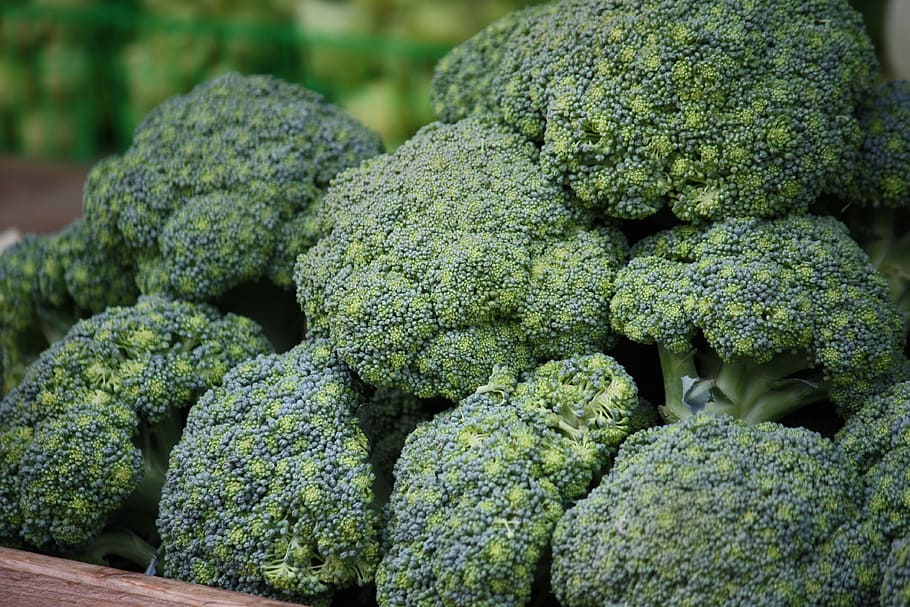
Growing broccoli at home is a great way to have fresh, healthy produce right at your fingertips. Known for its hardy and versatile nature, broccoli is a cool-season crop that can be planted in both the spring and fall. Whether you are a beginner gardener or an experienced one, growing broccoli is relatively easy and can provide you with a bountiful harvest. In this blog post, we will look at the steps to grow broccoli successfully, including choosing the right soil, planting techniques, watering and fertilization tips, and harvesting methods. So why wait? Let’s dive in and learn how to grow delicious, nutritious broccoli in your own garden!
Introduction to growing broccoli
When it comes to growing vegetables, broccoli is a nutritious and rewarding crop to choose. Before getting started, there are a few things to consider. As outlined in previous sections, optimal conditions for broccoli growth include slightly acidic soil with a pH between 6.0-7.0, and cooler temperatures. It is best to start by germinating seeds indoors and then transplanting them to the garden once they have sprouted.
When choosing the right soil for planting, it’s important to consider the amount of nutrients present. Broccoli plants require nutrients like nitrogen, phosphorus, and potassium to grow strong and healthy. Therefore, feeding them a low nitrogen fertilizer during planting is recommended, and again when the plants are approximately 6 inches in height.
To avoid common mistakes, such as planting too many seeds too close together resulting in stunted growth, paying attention to recommended plant populations can ensure healthy broccoli plants. Providing enough space for each plant to grow, as well as proper watering and sunlight, are essential for successful growth.
Overall, growing broccoli is a simple and rewarding process that can yield a nutritious harvest. With proper care and attention, anybody can enjoy the experience of growing their own vegetables, and enjoy the satisfaction of reaping the rewards of their efforts.
What you need to know
When it comes to growing broccoli, there are a few things you need to know to ensure a successful harvest. Firstly, broccoli thrives in moist, fertile soil that drains well. Adding slow-release fertilizers, well-rotted compost, or manure before planting can increase the soil’s nutrients. It’s also important to plant broccoli in full sun to get the best results.
Broccoli does best in firm, fertile, well-drained soil, and the plants grow quite tall, so choosing a sheltered spot is important. Broccoli grows best in temperatures between 65 and 70 degrees Fahrenheit, so it’s crucial to monitor the temperature and ensure those optimal conditions are met. In addition, protecting the plant from hot temperatures above 80 degrees Fahrenheit is vital.
To get started, planting broccoli seeds in early spring, a couple of weeks before the last spring frost date, is the way to go. Once all chances of frost have passed, move them to the garden. Plant them 18 to 24 inches apart in rows that are spaced 36 inches apart, and provide plenty of water during the first week to help establish the plants.
By following these basic steps, you can grow healthy, delicious broccoli that’s perfect for adding to salads, stir-fries, casseroles, or just enjoying as a side dish. With proper care and attention, you can avoid pests and diseases and reap a bountiful harvest. So, what are you waiting for? Get started on your broccoli-growing adventure!
Choosing the right soil for your broccoli
When it comes to growing broccoli, choosing the right soil is crucial for a successful crop. Broccoli plants thrive in well-draining, rich soil with a pH level between 6.0 and 7.0. It’s best to work in plenty of organic matter, such as compost or well-rotted manure, before planting to ensure your broccoli has access to the nutrients it needs to grow.
Consider planting your broccoli in a raised bed or container if your soil doesn’t meet these standards. If using a container, use potting soil that contains peat moss, perlite, and vermiculite to mimic the ideal growing conditions. And don’t forget to mulch around your broccoli plants to maintain moisture and discourage weeds.
To avoid common mistakes when growing broccoli, it’s important to choose the right soil for your plants. With the proper soil preparation, you’ll be on your way to harvesting a healthy and delicious crop of broccoli.
Optimal conditions for growing broccoli
In order to grow healthy and vibrant broccoli, it is important to provide it with optimal growing conditions. Once you have chosen the right soil for your broccoli and have prepared your garden site, the next step is to ensure that your broccoli is exposed to the right amount of sunlight, moisture and nutrients.
Broccoli plants need at least 6 hours of sunshine each day, so choose a garden site that receives adequate sunlight. If the weather in your area is too hot, you can give your plants partial shade to keep them protected.
Moisture is also crucial for broccoli growth, so make sure the soil is well-draining and maintains moisture levels that are consistent throughout the growing season. Composting your soil is a good way to provide your plants with necessary nutrients, which they need to flourish. Add some well-rotted manure or garden compost per square metre/yard.
Remember to fertilize your broccoli three weeks after transplanting seedlings into the garden, and again later in the season as needed. Maintaining a slightly acidic soil pH of 6 to 7 will help broccoli grow well, ensuring its nutrients are properly absorbed by the roots.
By providing broccoli with optimal growing conditions, you can help ensure that your plants thrive and produce a healthy crop. With the right care, you can create a robust and fruitful harvest, providing both you and your family with delicious and nutritious food.
Planting broccoli seeds or seedlings
One of the essential steps in growing broccoli is planting either the seeds or seedlings. When it comes to planting the seeds, it is recommended to start them indoors 7 to 9 weeks before the last frost. It is important to sow the seeds deep and keep the soil moist. The seeds germinate most quickly at about 80F but can still germinate at lower temperatures. Alternatively, you can sow the seeds directly outdoors from April to June either in small batches or in July with at least a 1/2 inch deep planting space for three seeds every 18 inches in rows 36 inches apart.
If you prefer starting with seedlings, you can use a garden fork or a trowel to create holes 1/4 to 1/2 inch deep. It is important not to plant broccoli seeds any deeper, or they won’t germinate. Once the hole is ready, place one seedling per hole or two to three seedlings to increase germination rates. It is also advisable to space the plants 18 to 24 inches apart in rows that are spaced 36 inches apart.
To help establish the plants, make sure you provide plenty of water during the first week. Furthermore, it is crucial to plant the seedlings in well-draining soil that is rich in organic matter, ensuring that you don’t bury the crown of the plant. Overall, planting broccoli seeds or seedlings is one of the most crucial steps in growing broccoli, and once done correctly, it paves the way for a healthy harvest.
Taking care of your growing broccoli plants
Once your broccoli plants have sprouted, it’s important to take care of them properly to ensure a healthy harvest. Watering is crucial, as broccoli requires a lot of moisture to thrive. Be sure to water your plants regularly, especially during dry periods. However, be careful not to overwater, as this can lead to root rot.
Fertilizing is also important. Use an organic low-nitrogen fertilizer to promote healthy growth without encouraging excessive foliage. Apply the fertilizer about two weeks after transplanting your seedlings or once they have established themselves.
Broccoli plants also need protection from pests and diseases. To deter pests, such as aphids and caterpillars, consider companion planting with herbs like basil or planting a border of marigolds around your broccoli patch. Keep an eye out for signs of disease, such as yellowing leaves or wilting, and treat promptly with an appropriate fungicide or pesticide if necessary.
As your broccoli plants grow taller, support them with stakes or cages to prevent them from bending or breaking in the wind. And don’t forget to prune off any yellowed or damaged leaves to encourage healthy growth.
With a little TLC, your broccoli plants should start producing heads within a few months. When the heads are ready for harvesting, use a sharp knife to cut them off, leaving a short stalk. And don’t worry if you miss a few heads, as the lower portions of the plant will continue to produce side shoots for several weeks. Happy growing!
Avoiding pests and diseases with broccoli
Broccoli is susceptible to quite a few pests and diseases, but with some effort, you can avoid most of them. Start by planting aphid-free transplants and attracting natural predators and beneficial insects with attractant plants. Inspect the underside of leaves often for aphids, and promptly handpick any that you find. You can also spray the larvae with insecticidal soap or Bacillus thuringiensis (Bt), a natural bacteria that is toxic to certain pests. To prevent clubroot disease, the soil pH should be kept between 6.0 and 7.0. It’s best to get soil tested to be sure. Irrigate deeply and infrequently, and add mulch to retain moisture and reduce weed growth. Companion plants like chamomile and cilantro can also help manage pests in broccoli patches. By following these tips, you’ll successfully avoid most broccoli pests and diseases.
Harvesting your broccoli
Once your broccoli has grown to maturity, it’s time to harvest it. Generally, broccoli is ready to be harvested when the flower buds are tightly closed and the heads are around 4-7 inches in diameter. It’s important to harvest your broccoli before the flower buds start to open and turn yellow, as this indicates that the broccoli has passed its prime and may taste bitter.
When harvesting your broccoli, use a sharp knife and cut the main stalk at an angle, just below the head of the broccoli. This will encourage further side shoots to grow and produce more broccoli. If you see any aphids or other pests on the broccoli heads, wash them off with water and a gentle soap before harvesting.
Once you’ve harvested your broccoli, you can store it in the fridge for up to a week. Keep it in a plastic bag or container to keep it fresh. If you’d like to freeze your broccoli, blanch it in boiling water for a few minutes before cooling and freezing in an airtight container.
Remember to keep an eye on your broccoli plants and harvest them as soon as they’re ready to ensure the best flavor and texture. With these tips, you’ll be able to enjoy delicious and nutritious broccoli all season long.
Storing and preserving your broccoli harvest
Once you’ve harvested your broccoli, it’s essential to store and preserve it properly to maintain its quality and freshness. First, it’s crucial to cool your broccoli immediately after harvesting to prevent it from wilting or developing a bitter taste. You can do this by placing your broccoli in a cool and shaded area or immersing it in cold water to remove the field heat quickly.
Once your broccoli is cooled, you can store it in the refrigerator for up to two weeks. The best way to store broccoli is to wrap it loosely in a plastic bag or damp paper towel to prevent moisture loss and avoid direct contact with other fruits or vegetables.
If you have a large harvest, you can also freeze your broccoli for long-term storage. To freeze broccoli, you need to blanch it first by boiling it for 2-3 minutes and then immediately putting it into icy water. This process helps to lock the nutrients and prevent color and flavor changes. After blanching, dry your broccoli and pack it in an airtight container or freezer bag. Your frozen broccoli can last up to six months in the freezer.
With these tips, you can store and preserve your broccoli successfully and enjoy its fresh and delicious taste for weeks or months after harvesting.
Common mistakes to avoid when growing broccoli
When growing broccoli, there are several common mistakes that gardeners should avoid in order to ensure a successful harvest. One of the biggest mistakes is choosing a location with inadequate sun, soil, and drainage. Broccoli needs full sun exposure for at least six hours a day, as well as fertile, well-drained, and moist soil with plenty of organic matter. Another mistake to avoid is planting too early in the season, as broccoli can tolerate a bit of frost but may struggle in extreme cold. Additionally, using soil that is too acidic or waterlogged can lead to poor growth and disease. When caring for growing broccoli plants, its important to avoid using high-nitrogen fertilizers, as they can prevent a head of broccoli from forming. Finally, gardeners should be sure to keep their broccoli plants free of pests and disease by using preventative measures like mulching and removing affected plant material. By avoiding these common mistakes, gardeners can enjoy a healthy and bountiful harvest of delicious homegrown broccoli.
Additional tips for growing broccoli successfully
To ensure a successful broccoli harvest, there are a few additional tips you can follow. First, make sure to keep the soil consistently moist but not waterlogged. This will help prevent both drought stress and root rot.
Another tip is to provide support for the broccoli plants as they grow. This can be done by using stakes, cages, or trellises to keep the heavy heads off the ground.
You may also want to consider growing companion plants alongside your broccoli. Plants such as onions, carrots, and lettuce can help attract beneficial insects that will help control pests on your broccoli.
It’s important to keep an eye out for common pests such as aphids, caterpillars, and slugs. Regular inspections and hand-picking can help keep these pests in check, but you may also want to consider using organic insecticidal soap or neem oil as a natural control method.
When it comes time to harvest your broccoli, wait until the heads are firm and tight before cutting them off at the stem. Be sure to do this before the yellow flowers appear, as this is a sign that the broccoli is past its prime.
Finally, to extend the life of your harvested broccoli, store it in the refrigerator in a plastic bag with a damp paper towel for up to a week. Alternatively, you can blanch and freeze the broccoli for later use in soups, stews, and stir-fries.
Follow these additional tips for growing broccoli, and you’ll be sure to have a successful and bountiful harvest.


